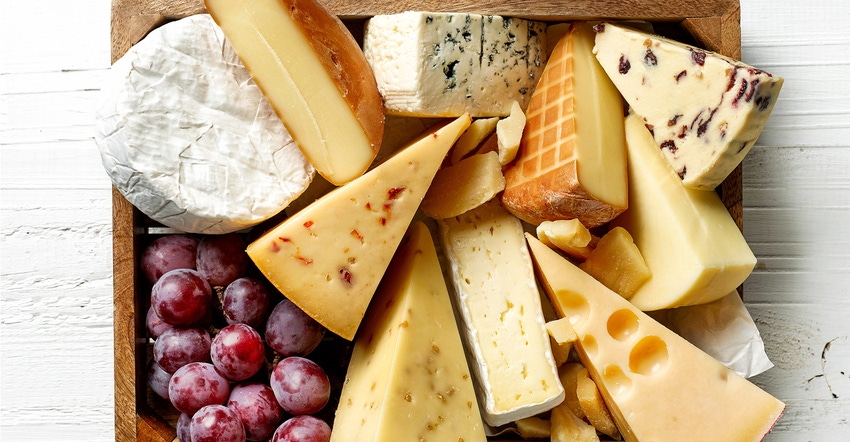
Higher cheese prices are more than offsetting lower dry whey prices, which will result in an October Class III milk price near $16.60, up about 30 cents from September.
On the Chicago Mercantile Exchange, 40-pound cheddar blocks averaged $1.63 per pound in September, improved in early October to $1.76, but then declined to $1.67 on Oct. 20.
Cheddar barrels averaged just $1.56 per pound in September, strengthened in early October to $1.74, and then declined again to $1.64 on Oct. 20.
The price of dry whey has been declining since peaking at 50 cents per pound in May and is now 36 cents. This decline has lowered the Class III price almost 80 cents.
Butter started October at $2.29 per pound and strengthened to $2.40, but has now fallen back to $2.35 per pound. The price of nonfat dry milk has dropped below 80 cents per pound to 74 cents, the lowest price since April 2016, more than offsetting higher butter prices.
According to University of Wisconsin economist Bob Cropp, unless cheese prices rally like they did last year, the Class III price for November and December will stay in the $16s and average about $16.25 for the year, compared to $14.87 last year. Looking into 2018, Class III prices could stay in the high $15s for the first half of the year and reach the $16s during the second half.
“It is surprising that butter prices have not increased more, with Aug. 31 stocks declining from July to 12.1% lower than a year ago,” Cropp says.
World demand expected to rise
Dairy exports have supported cheese and butter prices, according to Cropp.
“Cheese exports for August were 35% higher than a year ago and up 24% year-to-date,” he notes. “August butterfat exports were 177% higher than a year ago and 12% higher year-to-date. But August nonfat dry milk and skim milk powder exports were 9% lower than a year ago, the second straight month of decline.”
August dry whey exports were also lower than a year ago, with a decline of 10%. Both nonfat dry milk and skim milk powder, and dry whey are experiencing strong market competition for exports from the European Union.
“Competition for markets will remain strong in 2018, as milk production is expected to increase in the two largest exporters, EU and New Zealand, also with some milk production recovery in Argentina and Australia,” says Cropp. “Any major changes in trade agreements, in particular NAFTA, could also impact exports.”
Cropp says world demand is expected to increase as China and other major importers expand their imports of dairy products. He expects this to help absorb some of the increase in world milk production.
Milk prices for the remainder of this year and into 2018 will depend on milk production. USDA’s report for September milk production showed the increase in milk slowed to 1.1%, compared to increases of 2% for the previous two months.
Milk cow numbers declined 4,000 head from August but was still at 69,000 head, or 0.7% higher than a year ago. The slowdown in milk production was due to milk per cow, which was up just 0.3% from a year ago.
USDA is forecasting 2018 milk production to rise 1.9% from 2017, due to 0.5% more cows and 1.4% more milk per cow.
“This is a lot of milk that will put downward pressure on milk prices,” says Cropp. “It would take higher-than-expected domestic sales of milk and dairy products, or higher dairy exports, to push 2018 milk prices higher than what is now forecast.”
About the Author(s)
You May Also Like






